

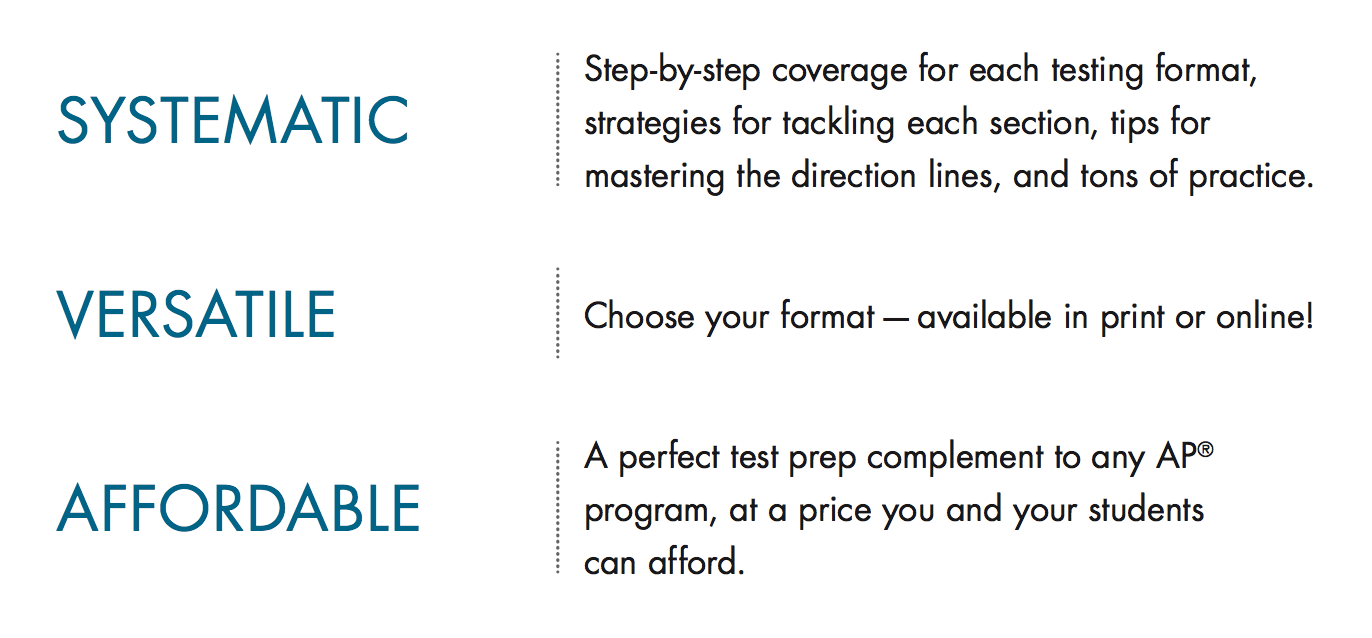
With complete coverage of each testing format, this is the perfect test prep complement to any AP ® program.
Scoring high come exam day requires more than linguistic and cultural competency. Students must also have a deep understanding of what to expect. Each Section and Part of this program opens with detailed strategies for test-taking success.
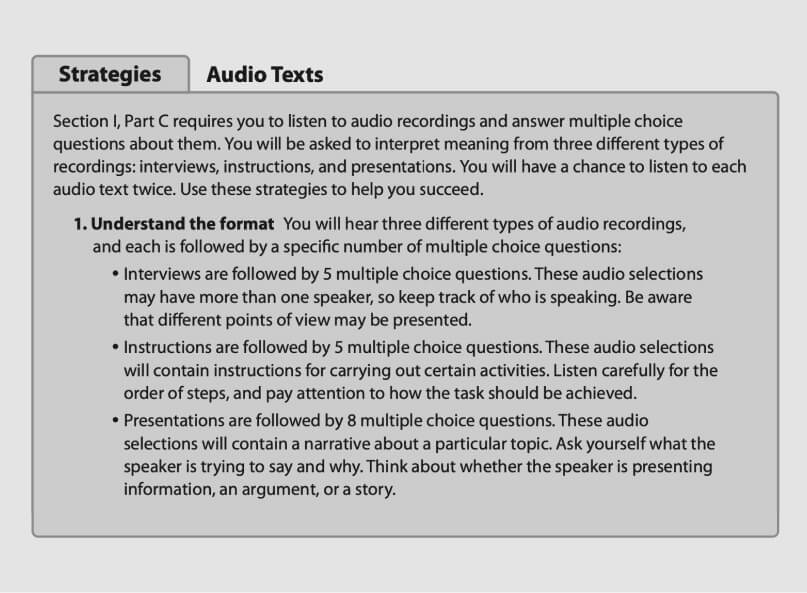
The worktext provides explicit skill-building and test-taking strategies for each activity type on the exam.
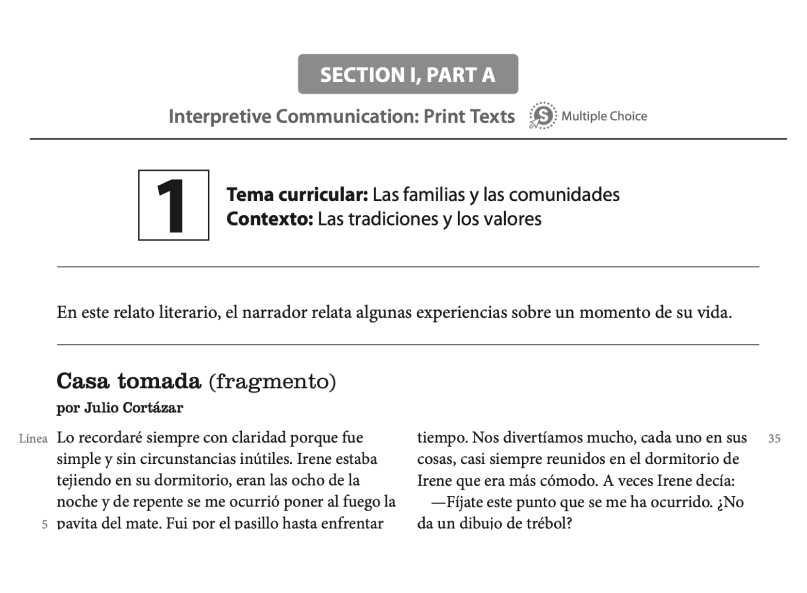
Section I, Part A. Interpretive Communication: Print Texts
Part A contains authentic text selections, representing different genres, followed by a multiple-choice sequence for each selection, which mimics the Exam.
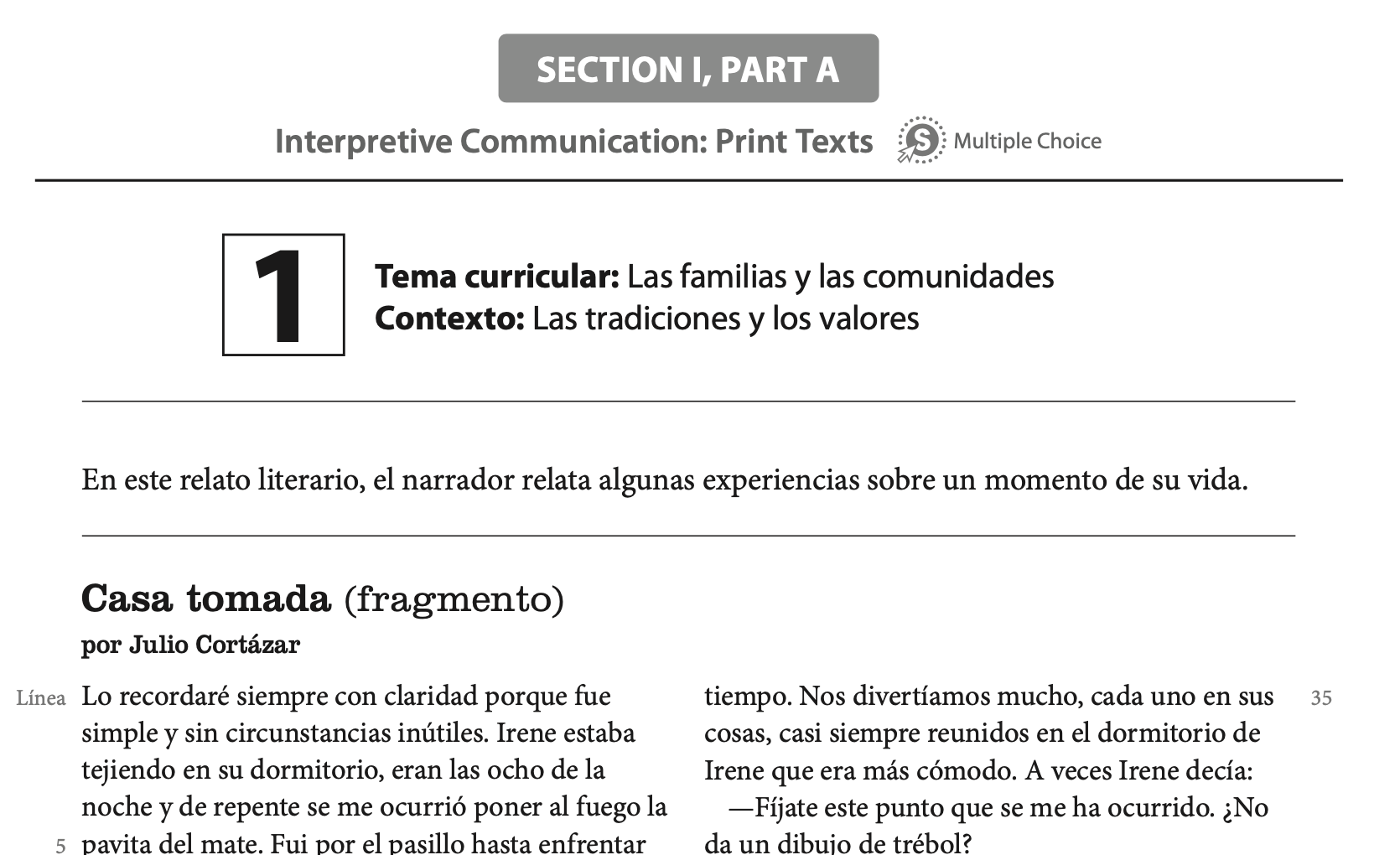
Part A contains authentic text selections, representing different genres, followed by a multiple-choice sequence for each selection, which mimics the Exam.
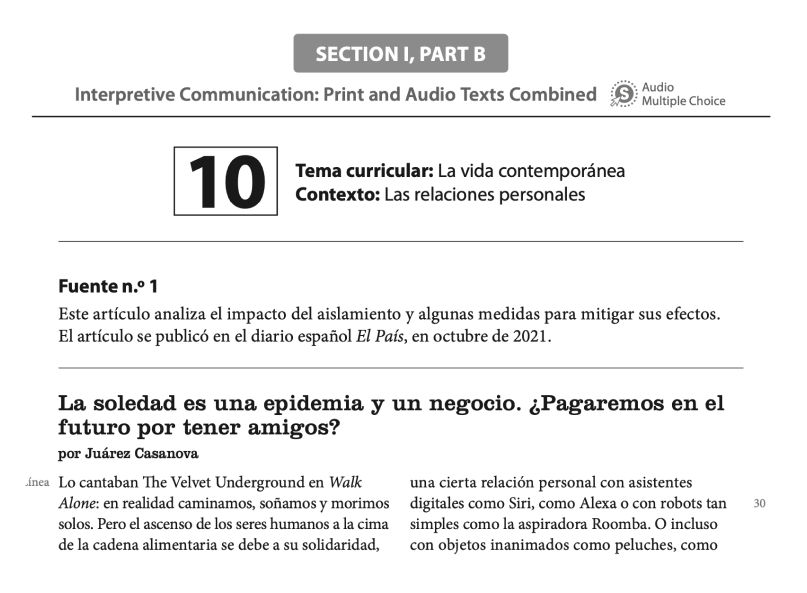
Section I, Part B. Interpretive Communication: Print and Audio Texts Combined
Section 1B will always have one print source and one audio source for each activity. The multiple-choice sequence for each selection combination mimics what students will encounter on the Exam.
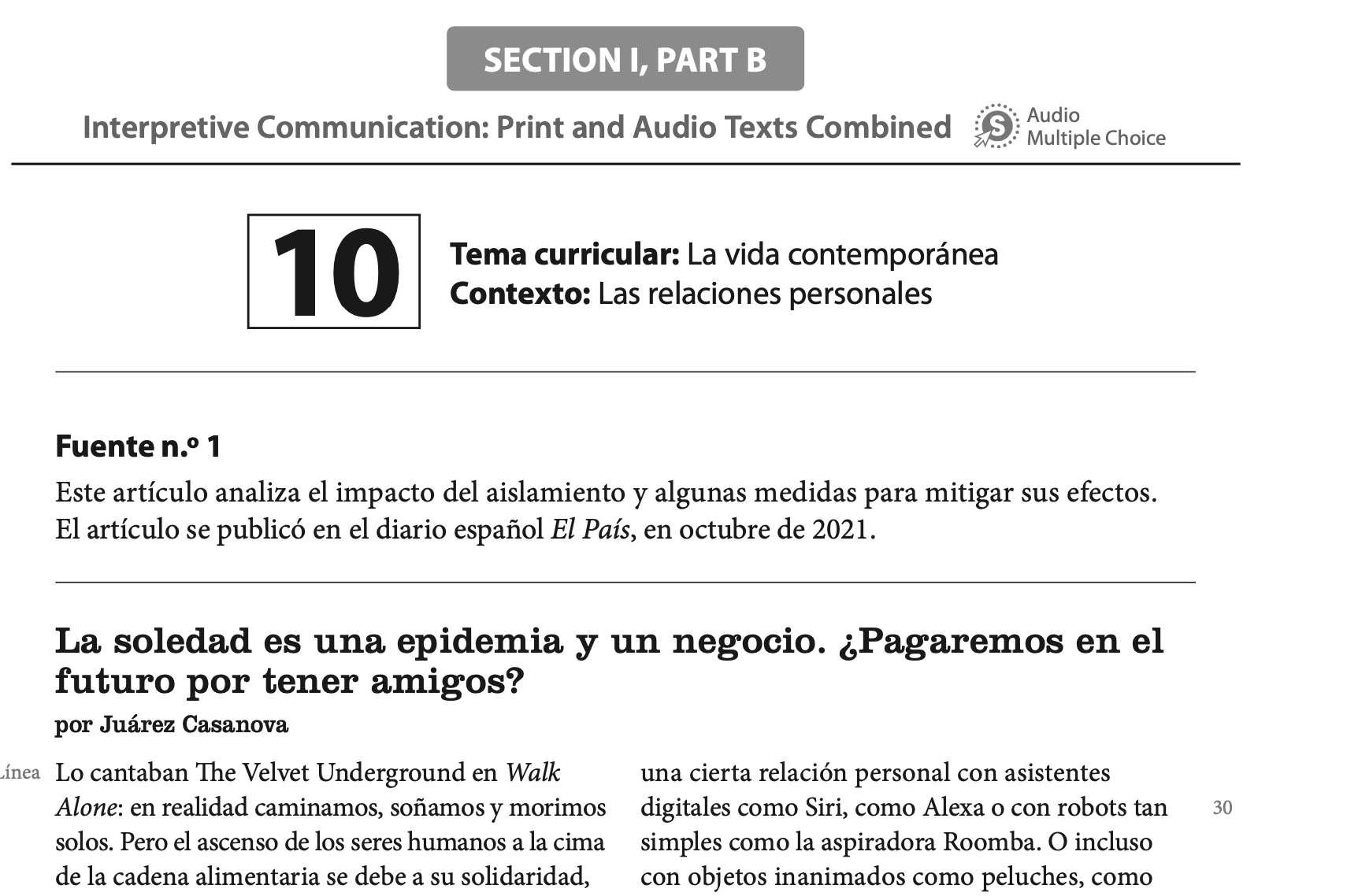
Section 1B will always have one print source and one audio source for each activity. The multiple-choice sequence for each selection combination mimics what students will encounter on the Exam.
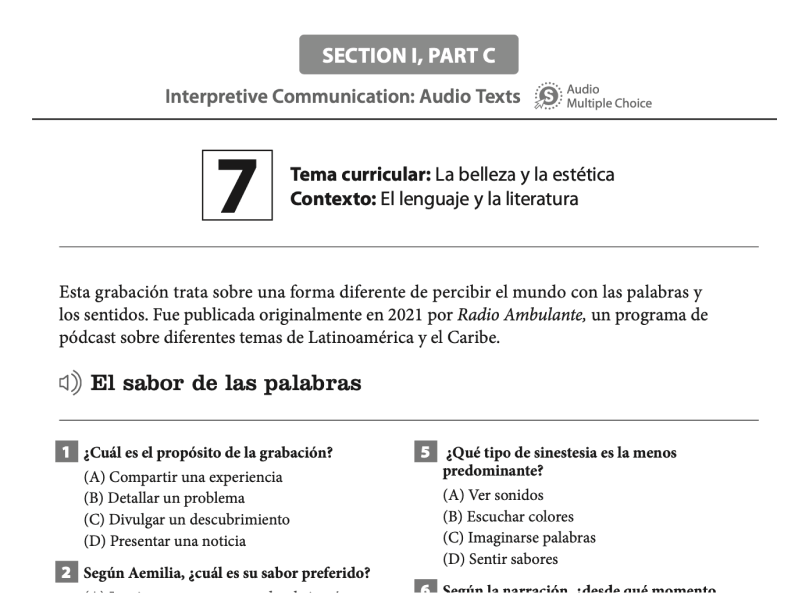
Section I, Part C. Interpretive Communication: Audio Texts
A simplified version of Part B, this section contains a variety of audio selections, followed by multiple-choice sequence.

A simplified version of Part B, this section contains a variety of audio selections, followed by multiple-choice sequence.
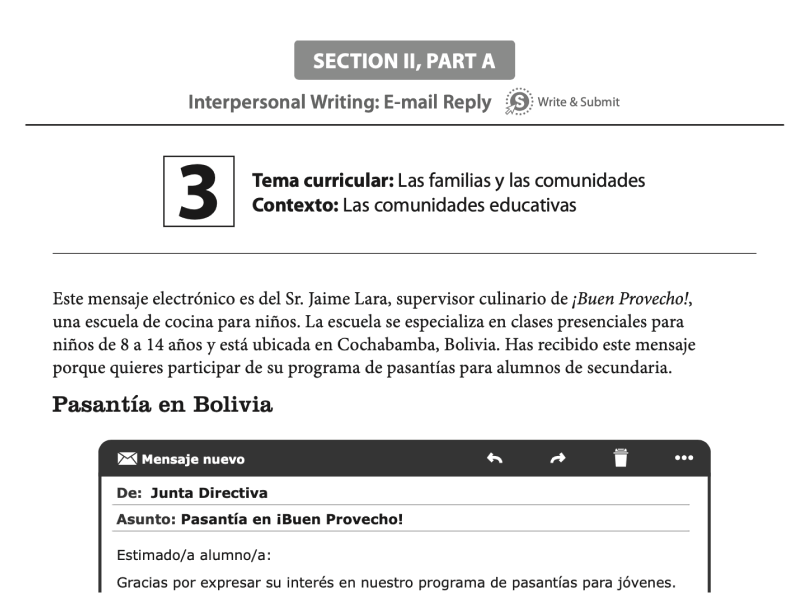
Section II, Part A. Interpersonal Writing: E-mail Reply
This section focuses on e-mail texts, all of which require the student to respond using the formal register. The readings address a variety of topics representing the themes and recommended contexts.
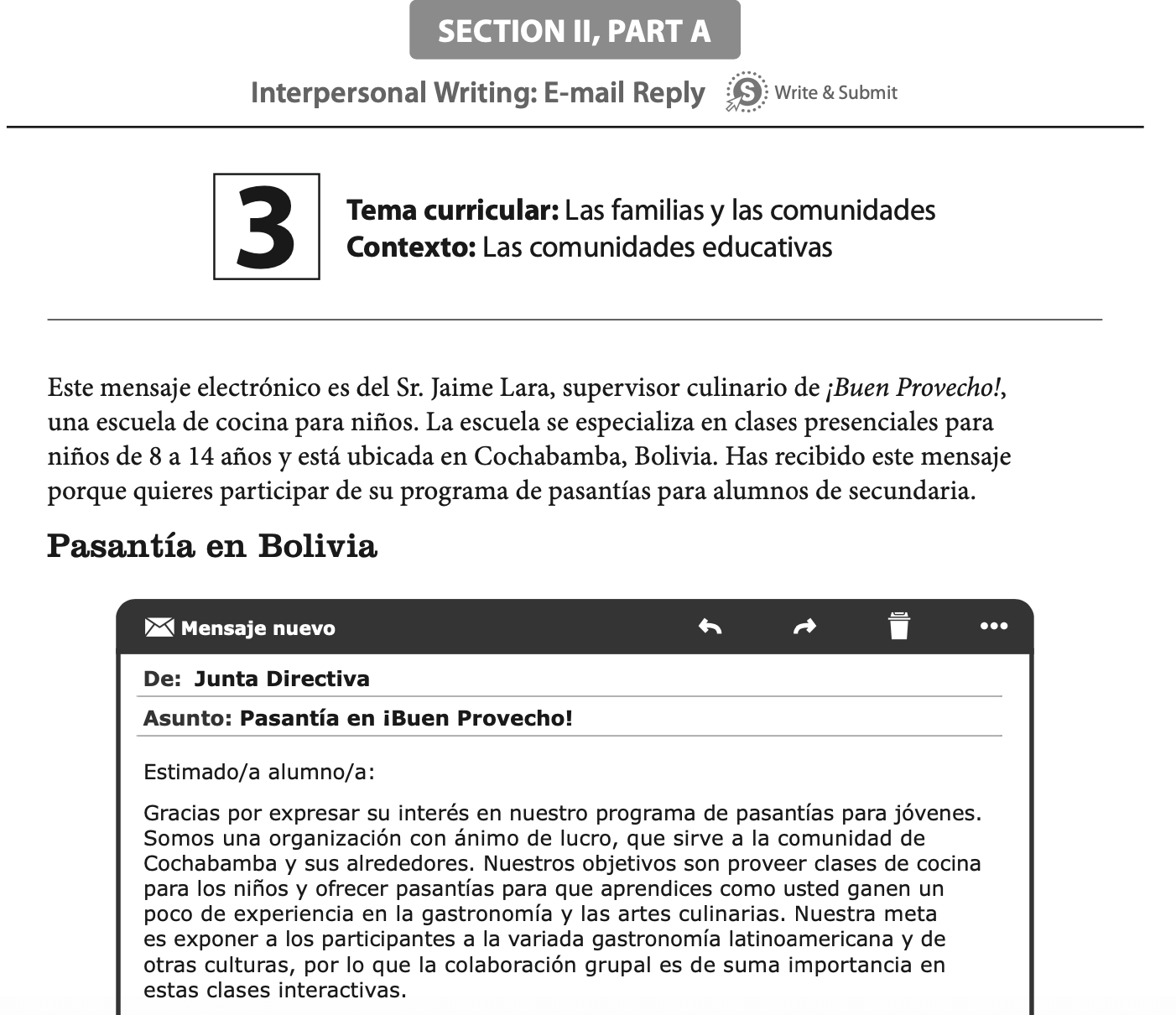
This section focuses on e-mail texts, all of which require the student to respond using the formal register. The readings address a variety of topics representing the themes and recommended contexts.
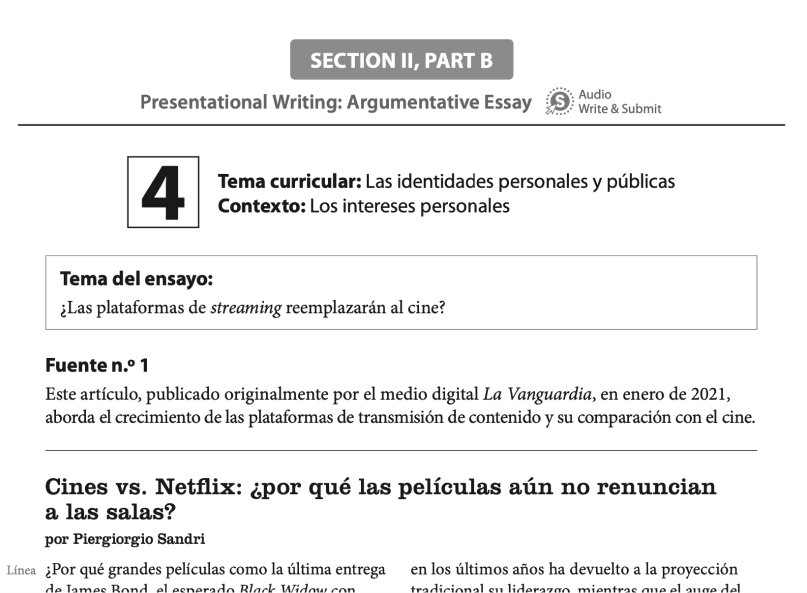
Section II, Part B. Presentational Writing: Argumentative Essay
In this section, students have to read an article, interpret a graph, and listen to an audio text. They then synthesize the information, take a position on a topic, and write an argumentative essay that addresses all three sources.
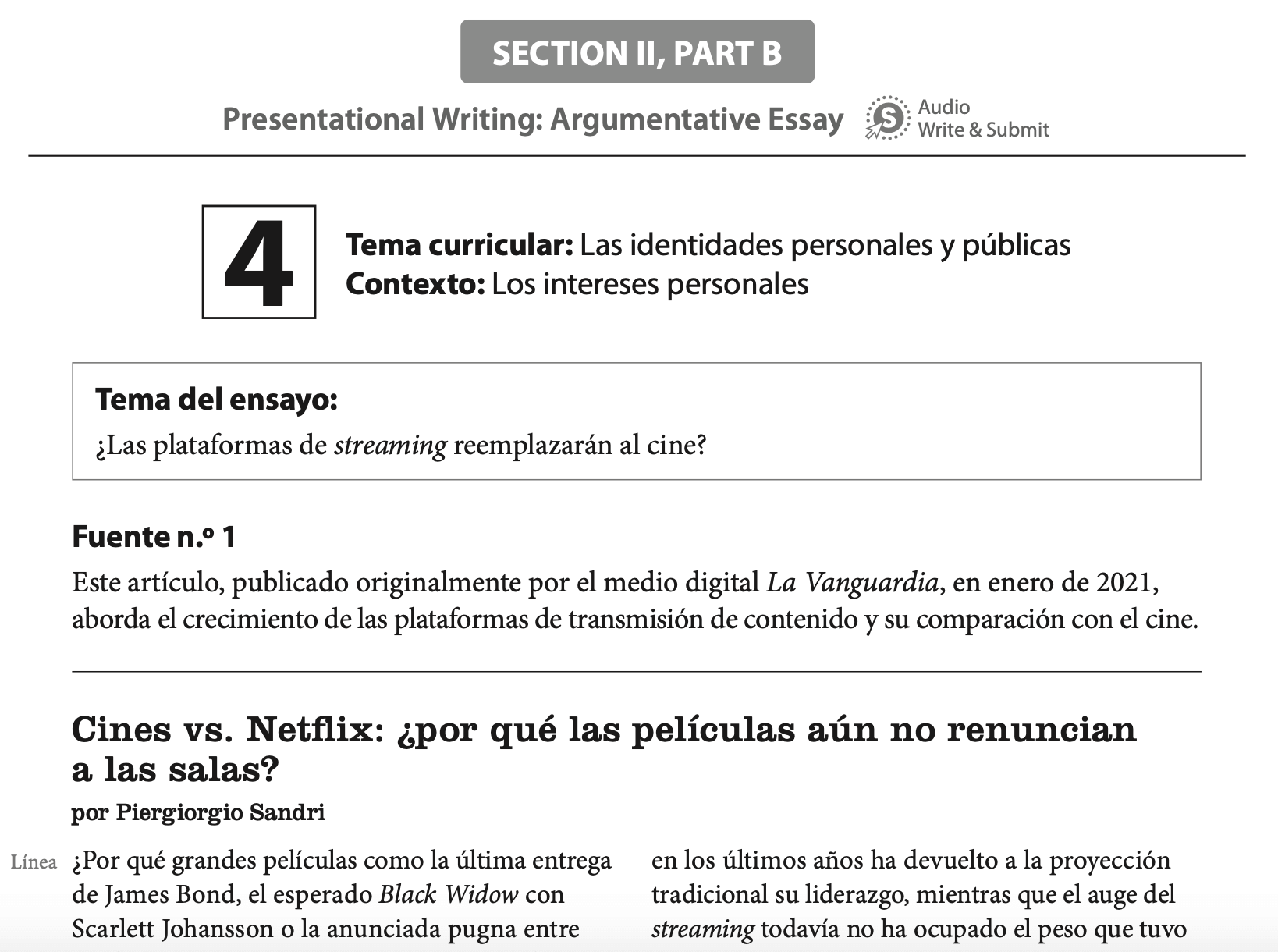
In this section, students have to read an article, interpret a graph, and listen to an audio text. They then synthesize the information, take a position on a topic, and write an argumentative essay that addresses all three sources.
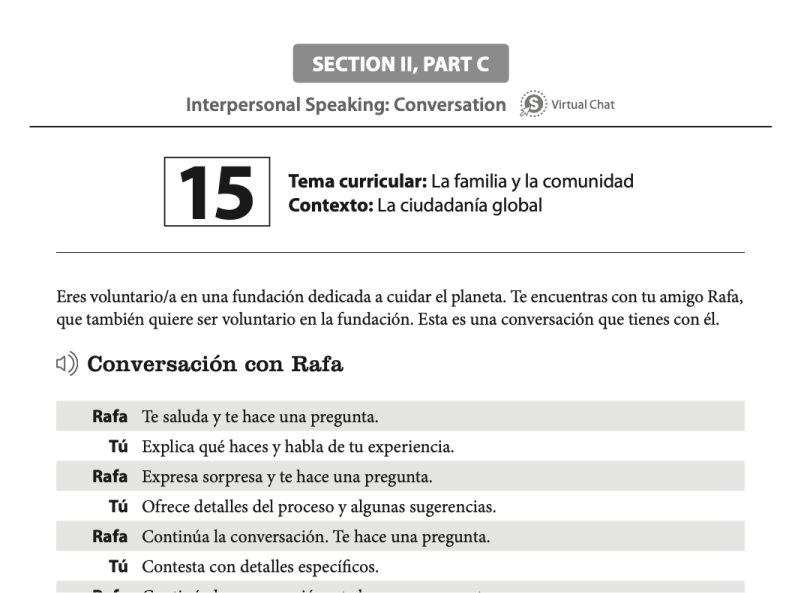
Section II, Part C. Interpersonal Speaking: Conversation
In this section, students are asked to participate in a conversation. They read a brief introduction outlining a conversation and then then have 20 seconds to record their part in each conversational exchange.
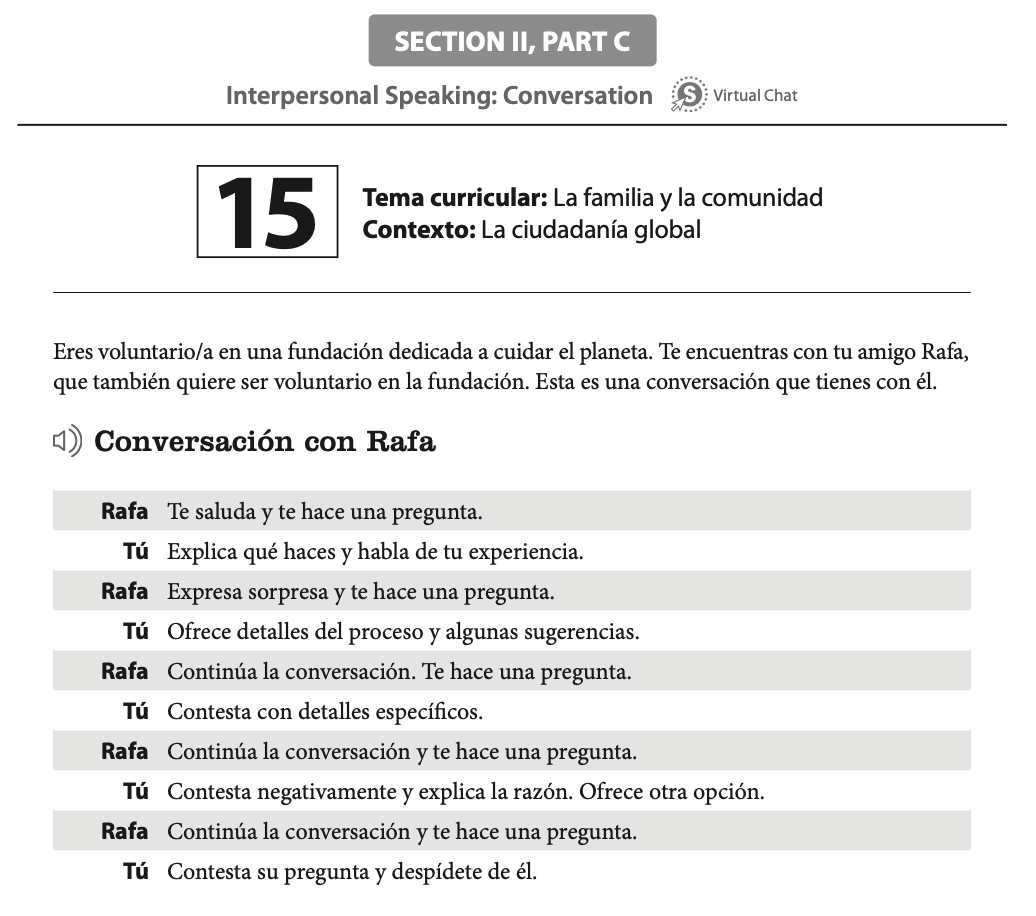
In this section, students are asked to participate in a conversation. They read a brief introduction outlining a conversation and then then have 20 seconds to record their part in each conversational exchange.
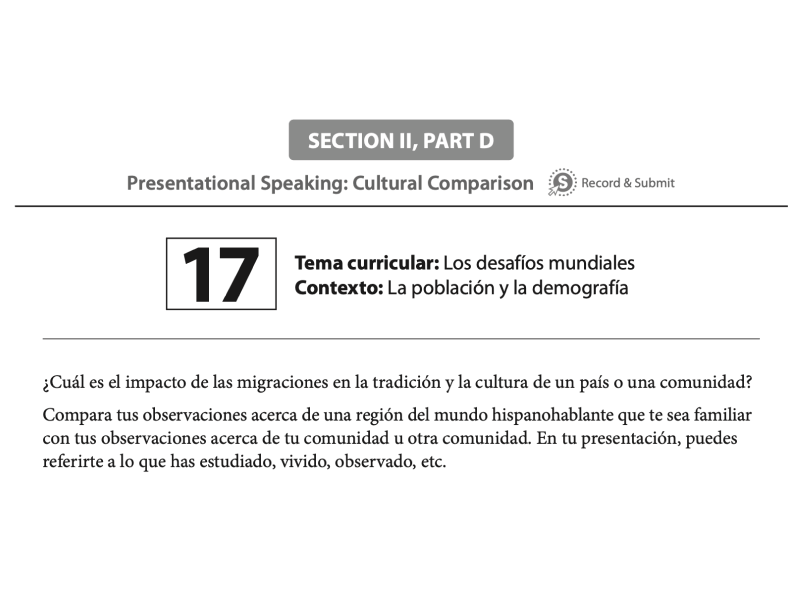
Section II, Part D. Presentational Speaking: Cultural Comparison
In this section, students must give an oral presentation in which they make a cultural comparison between their own community and an area of the Spanish-speaking world.
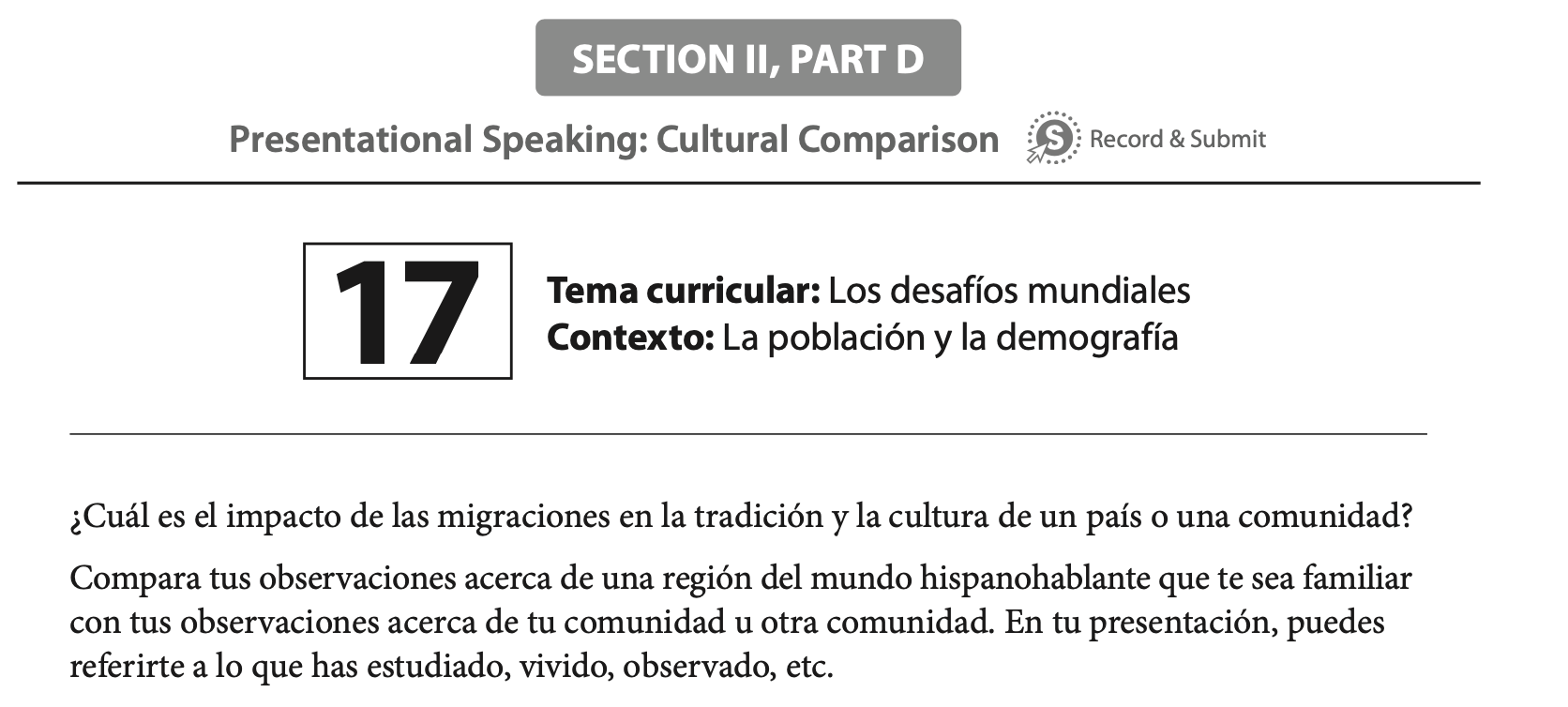
In this section, students must give an oral presentation in which they make a cultural comparison between their own community and an area of the Spanish-speaking world.
All activities from the print worktext are also available on the Supersite, along with access to all program audio and video, plenty of interactive activities that flow directly into the teacher gradebook, and powerful communication tools.
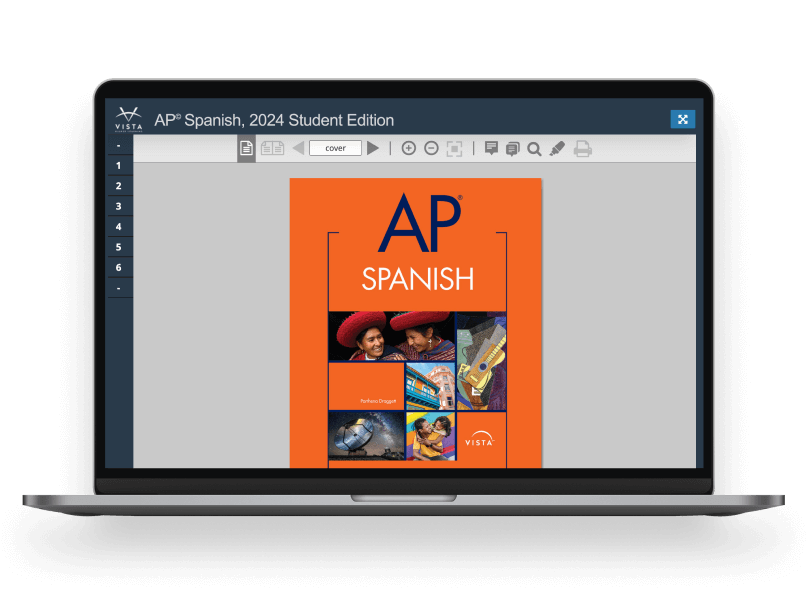
Now available with vText
The online interactive textbook provides a closer relationship between the worktext and the online activities.
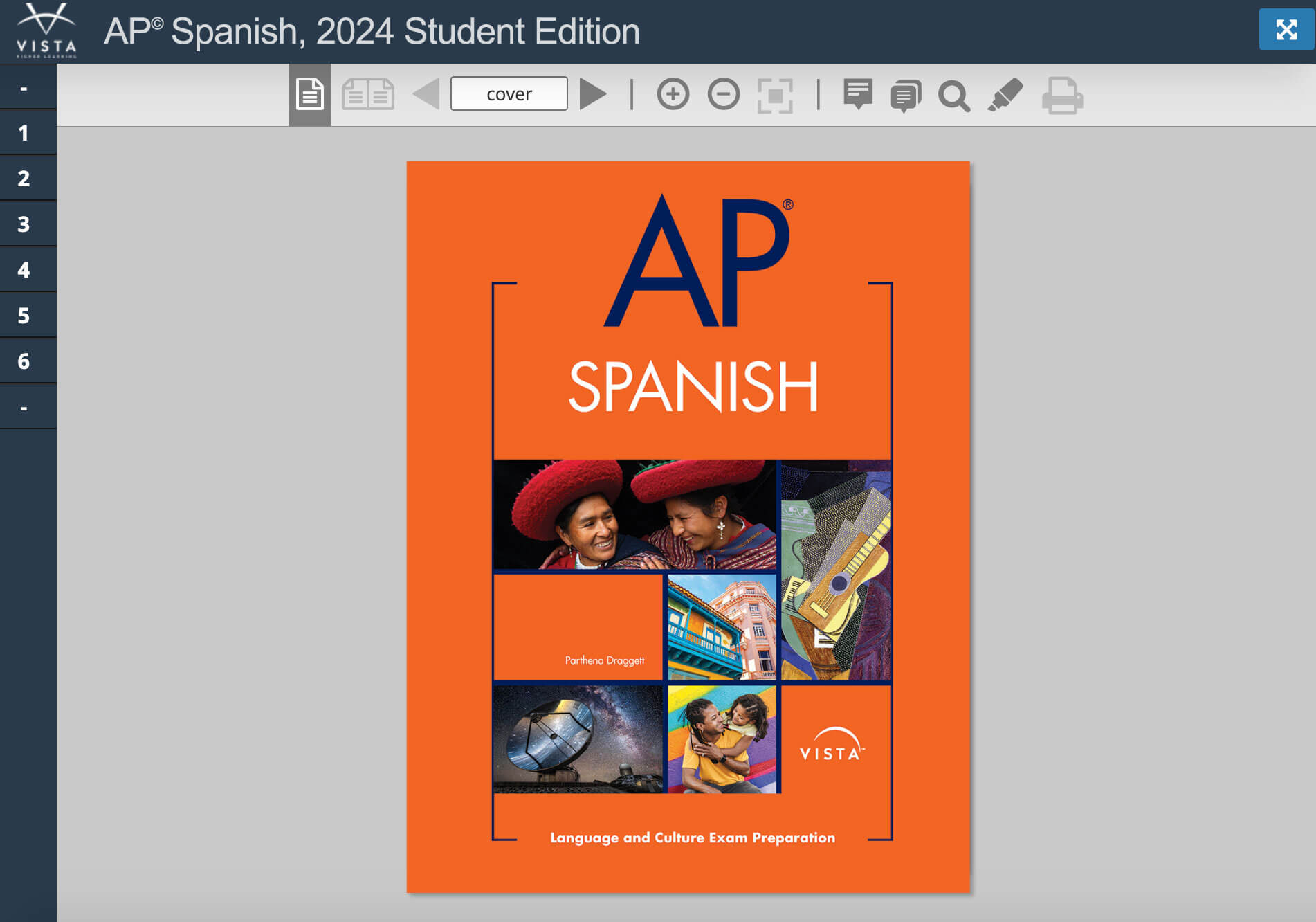
The online interactive textbook provides a closer relationship between the worktext and the online activities.
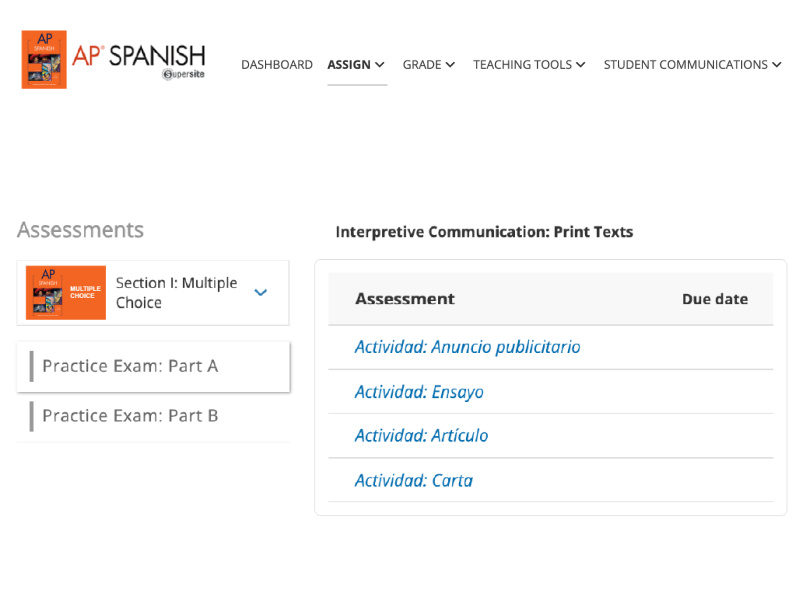
Online practice exam
A full-length, assignable online practice exam that mimics the look of and feel of the exam and will help students feel comfortable on exam day.
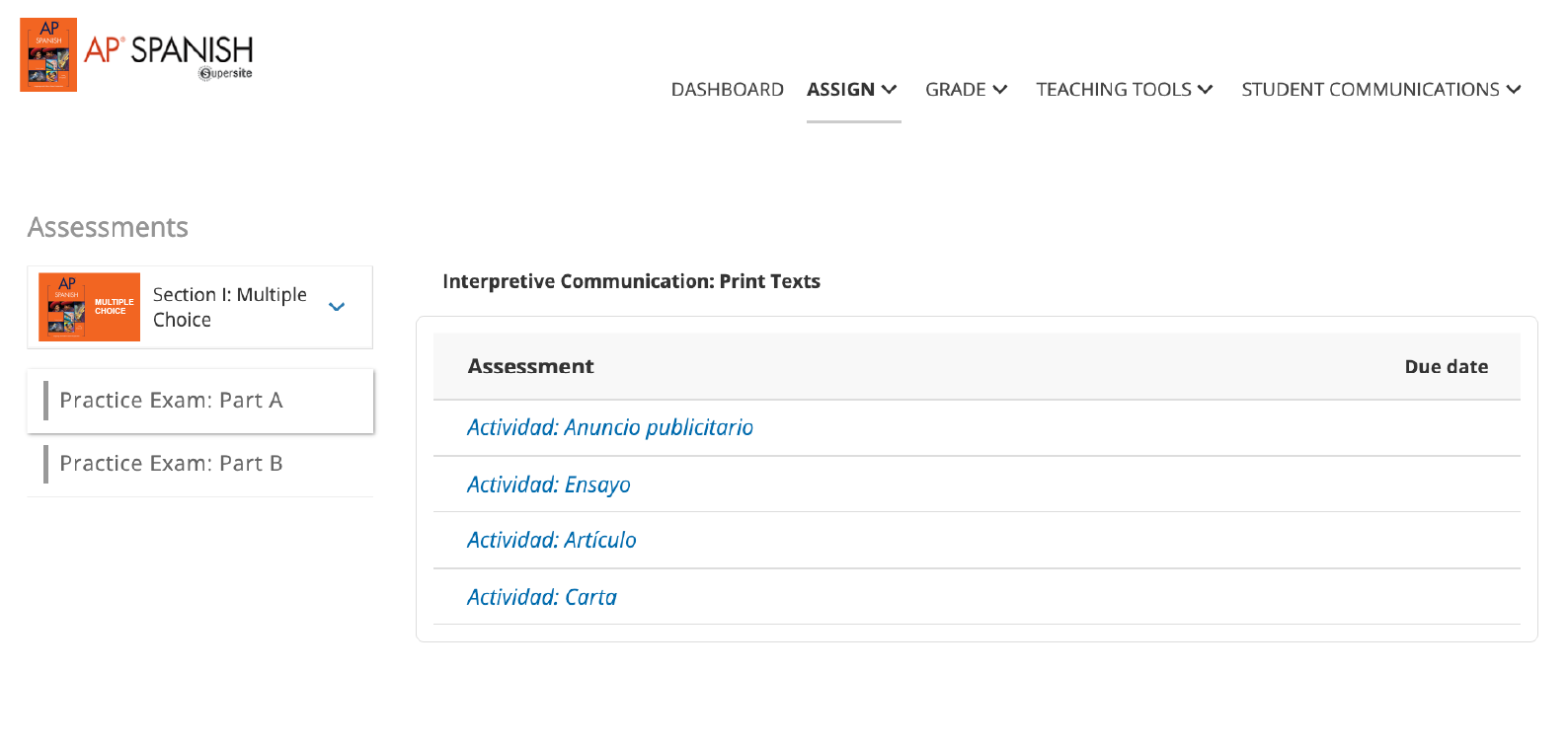
A full-length, assignable online practice exam that mimics the look of and feel of the exam and will help students feel comfortable on exam day.
© 2023 Vista Higher Learning. All rights reserved.
AP ® and Advanced Placement are registered trademarks of the College Board, which was not involved in the production of, and does not endorse, this product.
Photography and Art Credits
All images © by Vista Higher Learning unless otherwise noted.
Overview: Delpixel/Shutterstock; Features: Selim Seval/Shutterstock; Digital Experience: (top banner video) Monkey Business Images/Shutterstock; Vesna Ihor/Storyblocks; DedovStock/Shutterstock; FatCamera/iStockphoto; Dean Drobot/Shutterstock; (for teachers) Skynesher/iStockphoto; Flamingo Images/Fotolia; (more for teachers) Monkey Business Images/Shutterstock; AP ® Spanish Worktext: Zoltan Varga/Shutterstock; Request Digital Access: Delpixel/Shutterstock.